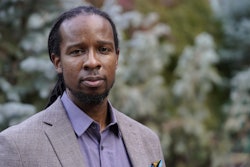Fans of the University of Illinois’ Chief Illiniwek are in mourning this week. They have donned black, held vigils, shed tears and expressed their heartbreak in countless news stories and opinion polls. An “honored” 80-year-old tradition has come to an end. The buckskin-clad Chief will leap no more.
You would think this is a time for American Indians and other opponents of the Chief to rejoice. After all, his demise marks the end of a 17-year battle to rid the campus of a racist symbol that has cost the university untold hours and resources, tainted its national reputation and created an atmosphere of hostility toward Native students and faculty. It is a major victory.
But Chief opponents are not celebrating. Yes, they are happy the Chief is gone, but they are also disappointed in the university’s handling of his departure and concerned about race relations on campus.
The university’s decision to oust Chief Illiniwek was borne of a long, hard struggle that began in 1989 when a Spokane Indian student named Charlene Teters braved racial slurs, profanity and death threats to speak her truth. “We are Human Beings, Not Mascots,” read the signs she held up at sporting events. What started as one woman’s concern for the effect of negative stereotypes on our children turned into a national movement that shed light on how hurtful those images can be. Over the years, many universities, including Stanford, Dartmouth and Oklahoma City University, have rid themselves of team names and mascots representing American Indians. But the University of Illinois has stood firmly by the Chief.
Years of impassioned testimony from students, faculty and members of the Native community could not shake them. Criticism from the U.S. Commission on Civil Rights, Amnesty International and various religious and human rights organizations couldn’t sway them. In the end, as usual, it took money to see the light.
Never mind moral or ethical considerations, university officials ousted the Chief after pressure from the NCAA, which deemed the character offensive and barred the university from hosting postseason games.
“This step is in the best interest of the university and is consistent with the board’s previously stated goal concluding this year its consensus process regarding Chief Illiniwek,” said board chairman Lawrence Eppley in a statement released Feb. 16. He noted that “while people differed on their opinions of the Chief, the overwhelming majority of those voices put their love for the university ahead of their opinion on the Chief.”
In other words, they went down kicking and screaming. And educators on campus worry about the message that sends to students.
“We failed as educators,” says adjunct professor Carol Spindel, author of Dancing at Halftime: Sports and the Controversy Over American Indian Mascots. “We have led students to believe that it’s OK to stereotype a minority group as long as you believe that you mean well and the group doesn’t have the political power to make you stop. We’ve done our students a tremendous disservice.”
Debbie Reese, a member of the Nambe Pueblo and a professor of American Indian studies at Illinois, says she was disappointed that university leaders didn’t acknowledge the concerns of the Native community or the hostile campus environment created by the Chief. Incidents included verbal harassment and, in one case, a physical threat against a Native student that was posted on a pro-Chief Web site.
“They had an opportunity to send a message, but they did nothing,” Reese says.
And that’s a shame. What better place or time for teaching a lesson on respect and the beauty of living in a multicultural society?
The librarian at my children’s elementary school saw such an opportunity three years ago, when my son came home from school and excitedly announced that he was going to play an Indian in a performance of Peter Pan. He handed me a list of items needed for the role — war paint, squaw’s wig, tomahawk and a peace pipe, among others.
I was aghast, but reluctant to take it on. I’m no activist, which was probably what Charlene Teters thought until she saw the Chief dance. But I presented my concerns to school officials and, after some discussion, Peter Pan was pulled.
It could have ended there, but our librarian seized the moment and called the drama kids together to explain why Peter Pan was dropped. She talked about honoring other people’s cultures and traditions by not making fun of them. She explained that when something you do or say hurts someone, you should stop. “You know the great thing about getting an education?” she said. “When we educate ourselves we can understand things better, and when we understand, we can change.”
I don’t know if those wide-eyed seven year olds got it. And I don’t know if Chief supporters will ever get it. I just know that the university is missing an opportunity to teach its students some important lessons and heal the rift that has divided the UIUC campus for so long.
— Rita Pyrillis, a member of the Cheyenne River Sioux Tribe, is a journalist in Evanston, Ill., and an instructor at the University of Wisconsin-Parkside in Kenosha.
There are currently 9 comments on this story.
Click here to post a comment.
© Copyright 2005 by DiverseEducation.com


















